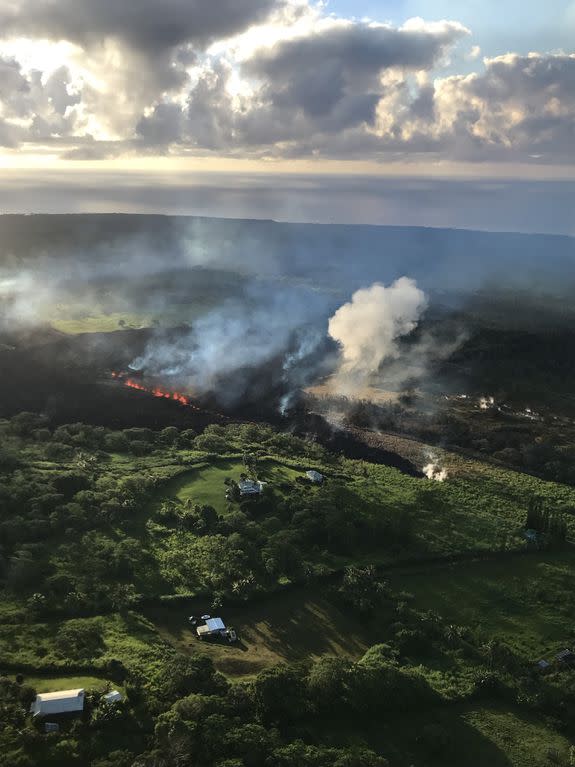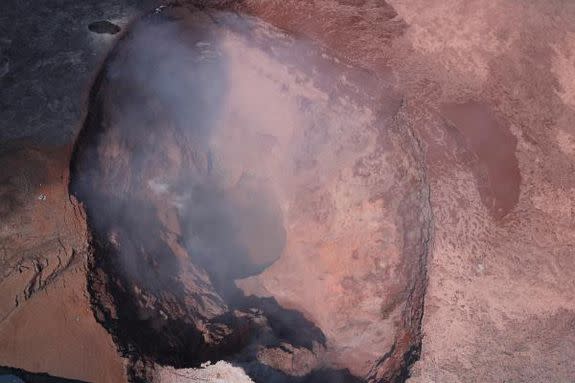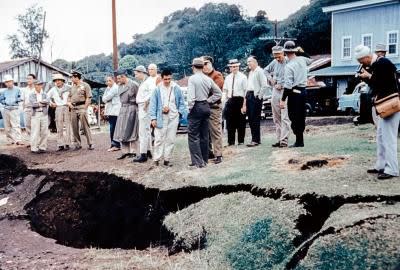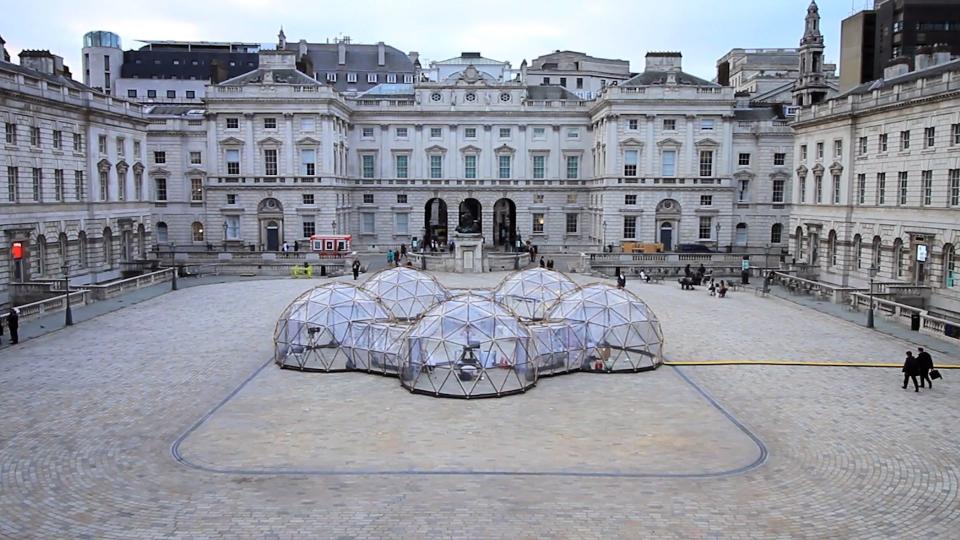Hawaii's Kilauea volcano could keep erupting for months. Here's why.

Hawaii's young, lively Kilauea volcano shows no signs of slowing down.
On May 4, the first lava-swollen fissure opened up in the Leilani Estates neighborhood on the eastern flank of Kilauea. Soon after, 16 more fissures opened in the area.
Meanwhile, near the volcano's gently-sloping summit, a lava lake recently brimming with steaming molten rock has since drained, an event government scientists now say could trigger a rare explosive blast from the ominous pit, shooting boulders some 10 tons (or more) into the area.
SEE ALSO: An astronaut saw Hawaii's Kilauea volcano erupting from space. And he took a picture.
But volcanologists, while pretty good at determining when a volcano might erupt, don't have the same ability to predict when an eruption might come to an end.
"It’s difficult to say with any certainty," Michael Poland, the Scientist-in-Charge at the U.S. Geological Survey's Yellowstone Volcano Observatory, said in an interview. "Forecasting the end is surprisingly hard."

Image: usgs
But in the case of Kilauea, there are strong clues that the eruption could continue "for weeks, if not months," said Poland.
When lava comes out of the ground, the USGS carefully collects and analyzes pieces of the cooling molten rock. And since the volcano's activity increased in early May, the lava's composition has changed.
At first, the lava was vintage stuff that had been sitting in the volcano for some 60 years, Poland said. Now, a different, "fresh" type of lava is coming out of the ground, meaning that new magma (underground lava) is on the move deep inside the volcano, which could continue to feed the eruption.
"That’s a sign it could go on for weeks to months," said Poland.
At Kilauea, two large, lava-filled vents have emptied, indicating that their lava erupted into the nearby neighborhood and that new sources are continuing to feed the eruption.

Image: USgs
The magma is moving around in chambers located miles underground, so it's difficult — if not impossible — to measure how much swirling molten rock is down there and how much more might bubble to the surface.
"It's really hard to tell," Erik Klemetti, a volcanologist at Denison University, said in an interview. "And that’s the key piece behind how long an eruption may go on."
But, scientists can look at past Kilauea eruptions for a good idea. Kilauea, fortunately, happens to be one of the most closely observed volcanoes on Earth.
"Kilauea is a relatively unique case because we have such good historical data," said Klemetti. "We have been monitoring it for quite some time.
In fact, scientists opened the Hawaii Volcano Observatory on Kilauea in 1912 and have witnessed a variety of eruptions since then. The 1960 Kilauea eruption lasted a month, and similar to this eruption, lava covered roads, and even flowed through and destroyed the village of Kapoho.

Image: usgs
Around 90 percent Kilauea's surface is covered in geologically fresh lava, less than 1,000 years old. This means that the young volcano is still growing into a gently-sloping "shield-like" shape.
The type of eruption we're seeing today is "very normal for a shield volcano," said Poland. "But that's small solace for people that live there."
It's just unknown how long each eruption might last.
"Weeks to months is a pretty good estimate," said Klemetti. "But it wouldn’t shock me if it lasted longer than that."
"But if it ended soon, it would surprise me more."
WATCH: From Norway to India, these ‘pollution pods’ let you sample the worst and the best air quality of cities around the world


